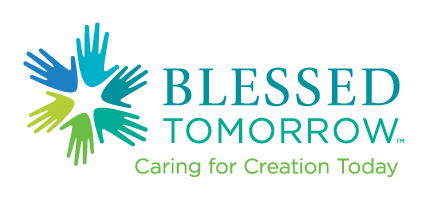The “Culture Change” Enabling Faith Communities to Capitalize on America’s Solar Boom
2016 was a great year for solar power as America celebrated its one-millionth-panel installation. Ranging from simple home systems to massive commercial farms powering cities, the solar boom in America is alive and well. Renewable energy has grown steadily in the past few years, and solar power is projected to double in 2017, despite the “missed growth opportunities” of the current presidential administration. Taking part in this transformation isn’t always easy – would-be adopters sometimes face legislative setbacks, high upfront costs, and cultural obstacles—but many churches are learning to overcome these barriers through community outreach and skilled communications.
Trudy Mott-Smith, the Project Manager for the Unitarian Universalist Church in Concord, New Hampshire, was surprised to encounter opposition when her church moved to install two rows of 50 panels each in its front yard. After a torrid struggle with the city council who responded to neighbor complaints of the solar panels being an eyesore, the church settled on hiding them from the street behind shrubbery.
For many, this seemed like a fair compromise—but as I’ve written before, solar panels on faith facilities are about more than reducing fossil fuel consumption (which could save facilities like Concord’s Unitarian Universalist Church $5,000 annually). They send a message to their surrounding community that people of faith care about climate change and are finding solutions to fix it – and hiding the panels from view defeats that purpose.
While Mott-Smith complied with the request to plant concealing shrubbery, she wasn't exactly thrilled, explaining, "Where there used to be a church….there's going to be a sudden wall of green. We were not what you would call extremely happy." Many congregations are surprised to learn that city ordinances impeding their efforts have more to do with aesthetic appeal than resistance from energy companies (though utility companies present their own host of objections).
Overcoming strict city ordinances is one step in the process, but upfront costs can also present new challenges to surmount. According to some sources, solar panel installations can initially cost anywhere from $10-30 thousand, but that expense is usual recuperated within a few years through reduced energy costs. Thanks to Google’s Project Sunroof, you can now see just how much your faith facility would save by simply entering the street address. They even calculate how many usable hours of sunlight your rooftop gets and exactly how much space is available for panel installations.
Grants are another possibility for building solar communities. One state over from New Hampshire, our partner Vermont Interfaith Power and Light (VIPL) announced last week that they successfully secured Katy Gerke Memorial Program (KGMP) grant funds for seven Vermont churches and faith communities to cover the cost of professional energy audits.
Energy audits like these do more than determine the solar rewards available for a building. They examine every specific opportunity to reduce energy use, often saving faith communities tens of thousands of dollars annually. Recommended retrofits may include lighting, heating, and cooling changes, but often require costly experts to conduct the initial audit. Grants like those retrieved by VIPL help faith facilities in overcoming the first step in their walk toward caring for creation.
We look forward to seeing the incredible changes being made at the seven recipients facilities: Federated Church of East Arlington; Knights of Columbus, Rutland; Norwich Congregational Church; United; Church of Dorset and East Rupert; United Church of Northfield; Waitsfield United Church of Christ; and White River Junction United Methodist Church.
Organizations like VIPL are changing the way people think about their access to renewable energy, but, as Christian Science Monitor staff writer Zack Colman explained, there are unseen hurdles that exist beyond upfront costs or city ordinances—and faith leaders are at on the frontline of fixing it.

In an interview, Dant’e King, the Director of Community Outreach for Groundswell in Baltimore and Washington, and senior pastor at Maryland’s Greater Mount Zion Church explained, “I don’t think it’s a matter of whether it’s too expensive or not. I think the misperception is that it’s exclusive.” In King’s fervent outreach, he’s found that the prevailing perception of solar energy is that it’s for “white yuppies.” But King is hoping to change that misconception by increasing outreach programs in low- and middle-income communities.
By working to break these cultural barriers, Groundswell has successfully unleashed a tidal wave of major solar projects on faith facilities. A recent undertaking on a Washington church created “a solar-paneled canopy for its parking lot. The resulting power will flow onto the local electric grid and then be purchased by about 150 ratepayers who are seeking clean energy.” That's not simply cost-reducing – that’s revenue-generating.
Solar remains the fastest-growing energy source in America and stands to benefit the climate, investors, and job seekers like no other source available. But our shift toward renewable energy will require people of faith to change the way we think about it, dispelling myths and preconceived notions along the way. As King aptly summarized his efforts, “It’s a culture change.”
Ryan Smith is a writer at Blessed Tomorrow. He received his master's degree in Religious Studies with an emphasis on faith and climate change from the University of California, Riverside.
